Cornus florida
As the state tree of Missouri, the flowering dogwood means a lot to me.
I’m a long-time resident of the “Show-Me” state, and I can say with confidence that this ornamental tree is definitely worth showing.
Lovely leaves, beautiful blooms, and a fascinating form all combine to make Cornus florida a sight to behold, no matter the time of year.
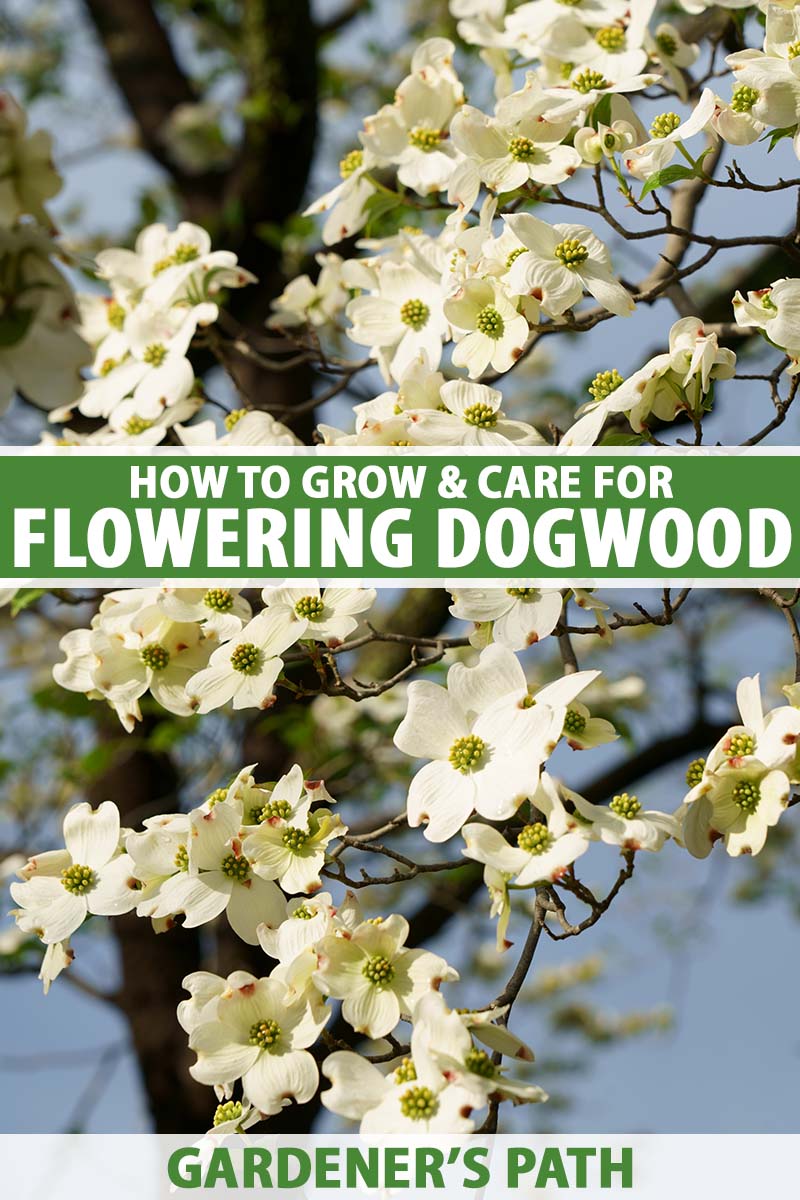
We link to vendors to help you find relevant products. If you buy from one of our links, we may earn a commission.
This bad boy isn’t the trickiest plant to take care of, either.
Sure, you’ll have to be extra vigilant to ensure that it doesn’t become sick or infested with pests. But as long as a flowering dogwood is kept healthy, being its plant parent is smooth sailing.
Of course, proper cultivation takes some specialized knowledge… which is why we put together this growing guide for you!
After reading it, you’ll have the know-how needed to grow and care for some truly awesome trees.
Here’s a quick preview of everything this guide will teach you:
What You’ll Learn
What Are Flowering Dogwoods?
Hardy in USDA Zones 5 to 9, the flowering dogwood (Cornus florida) is native to the eastern half of Mexico and the United States, and southeastern Canada.
It’s a member of the Cornaceae family and the Cornus genus – both of which are essentially synonymous with dogwoods.
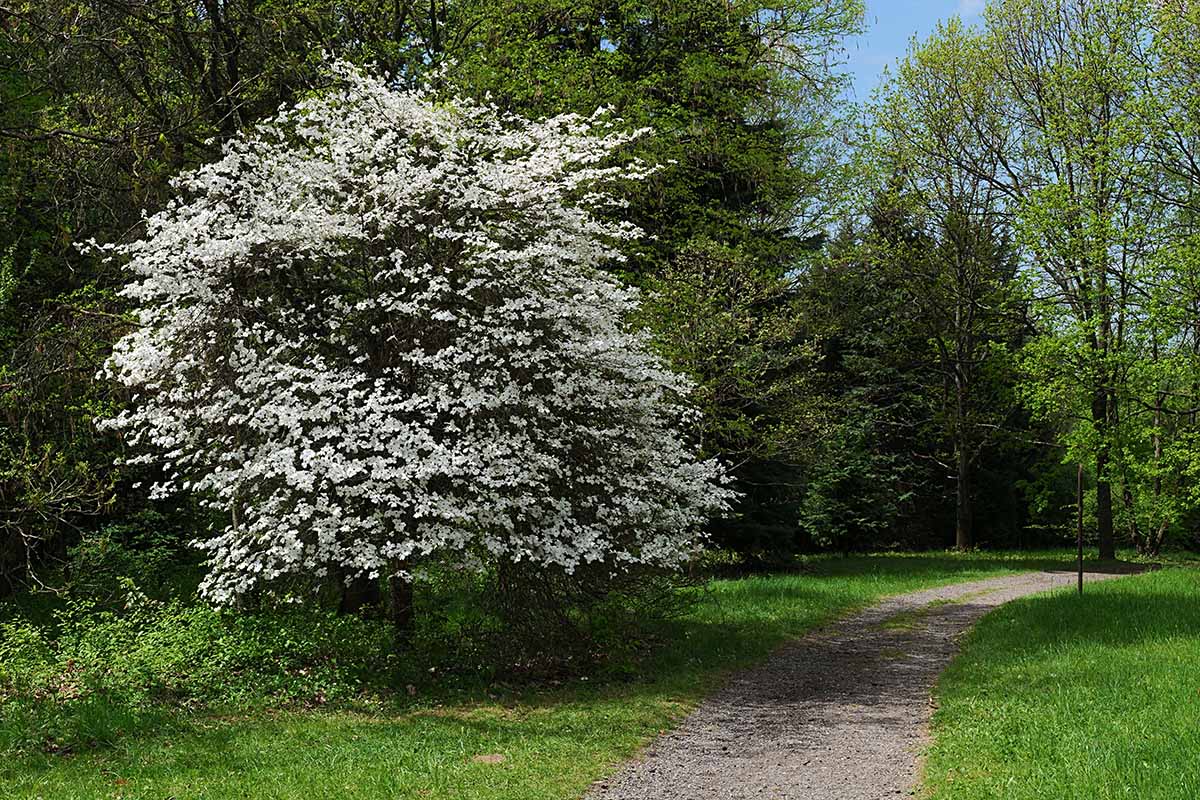
The common term “flowering dogwood” may also be used to refer to other dogwood trees that put out gorgeous flowerlike leaf bracts, such as the kousa dogwood and pagoda dogwood.
But when it comes to beautiful blooms, C. florida is the champ.
With a mature height of 15 to 35 feet and a width of 15 to 40 feet at the canopy, this understory tree has upper branches that grow upright, while the lower branches spread out more horizontally.
This creates an interesting layered effect that emphasizes the branching habit, rather than the trunk.
The plant’s gray, scaly bark that some might compare to alligator skin peels easily, yet the wood beneath is strong and durable.
The genus name Cornus – from the Latin “cornu” meaning “hard” – is a nod to the wood’s toughness.
The foliage is oppositely arranged and each leaf is oval-shaped, narrowing to a pointed end. Alternating veins originate from the midrib and meet at the tip of each leaf. The undersides of the leaves are pale, and the margins are slightly wavy.
Color-wise, the leaves emerge in shades of bronze-green to yellow-green in spring, mature to a dark green in summer, and transform to reveal red to reddish-purple hues come autumn.
This plant is actually one of the first deciduous trees in the landscape to showcase its fall colors, which persist until the leaves drop in early winter.
The flowers are what really set C. florida apart from other landscape trees. It’s right there in both the common name and the Latin species name florida, meaning “flowery” or “in bloom.”
But this does come with a notable technicality: similar to poinsettias or bougainvillea, the actual flowers aren’t the show-stoppers – rather, the adjacent petal-like leaf bracts are.
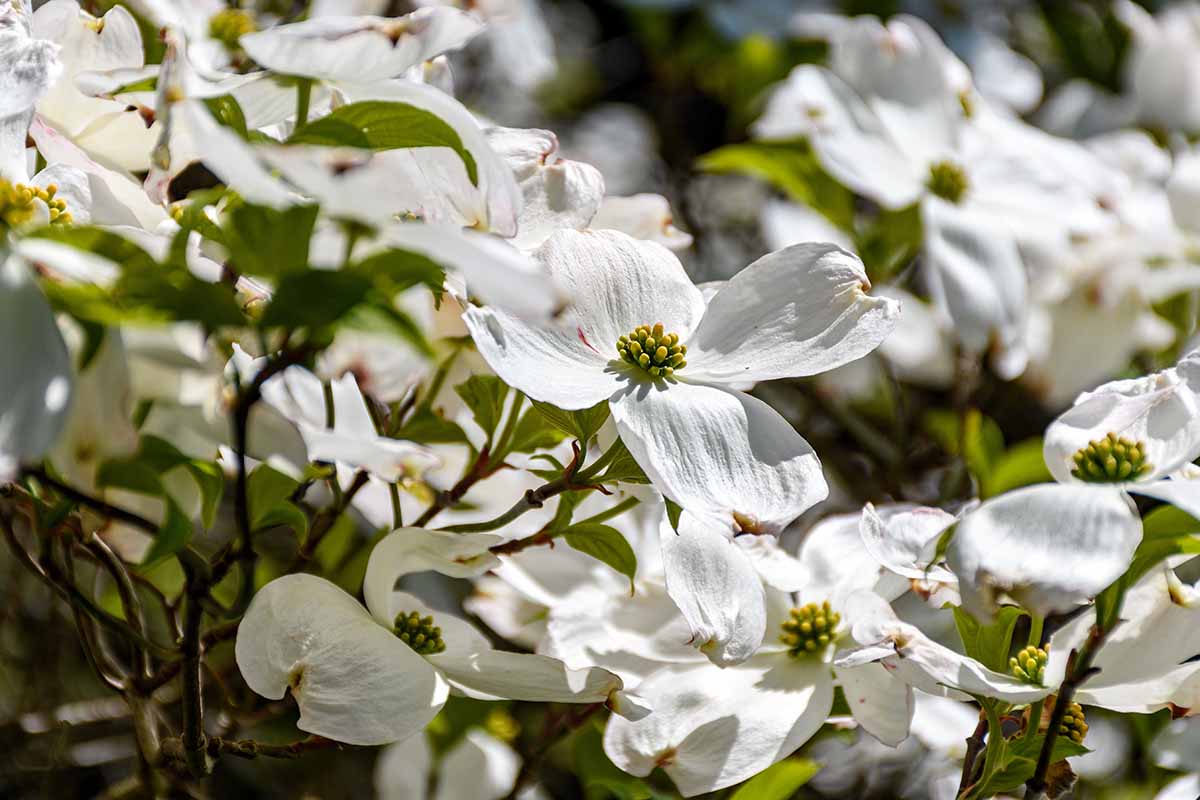
The true flowers are yellowish-green, tiny, and crowded together in an insignificant mass that lacks showiness.
Four leaf bracts lie underneath the flowers, each shaped like a top-heavy egg with a notable rose- or maroon-shaded notch at its apex.
The bracts are white in the standard species, but some cultivars feature golden-yellow, red, or pink hues.
Emerging in mid-spring, the flowers are pollinated by butterflies and mining bees, and later give way to clusters of glossy red drupes, which birds, rabbits, deer, and even black bears find quite tasty. Rabbits and deer also browse the tree for its leaves and twigs.
But to all Homo sapiens reading this, don’t get any ideas – the fruits are poisonous to humans.
Cultivation and History
Native Americans treated colic and fevers using an infusion of C. florida flowers, and also used the roots to make red dye.
English colonists sent plants back to England in 1722 but they did not respond well to the local climate. Some sources say one of these took 40 years to flower!
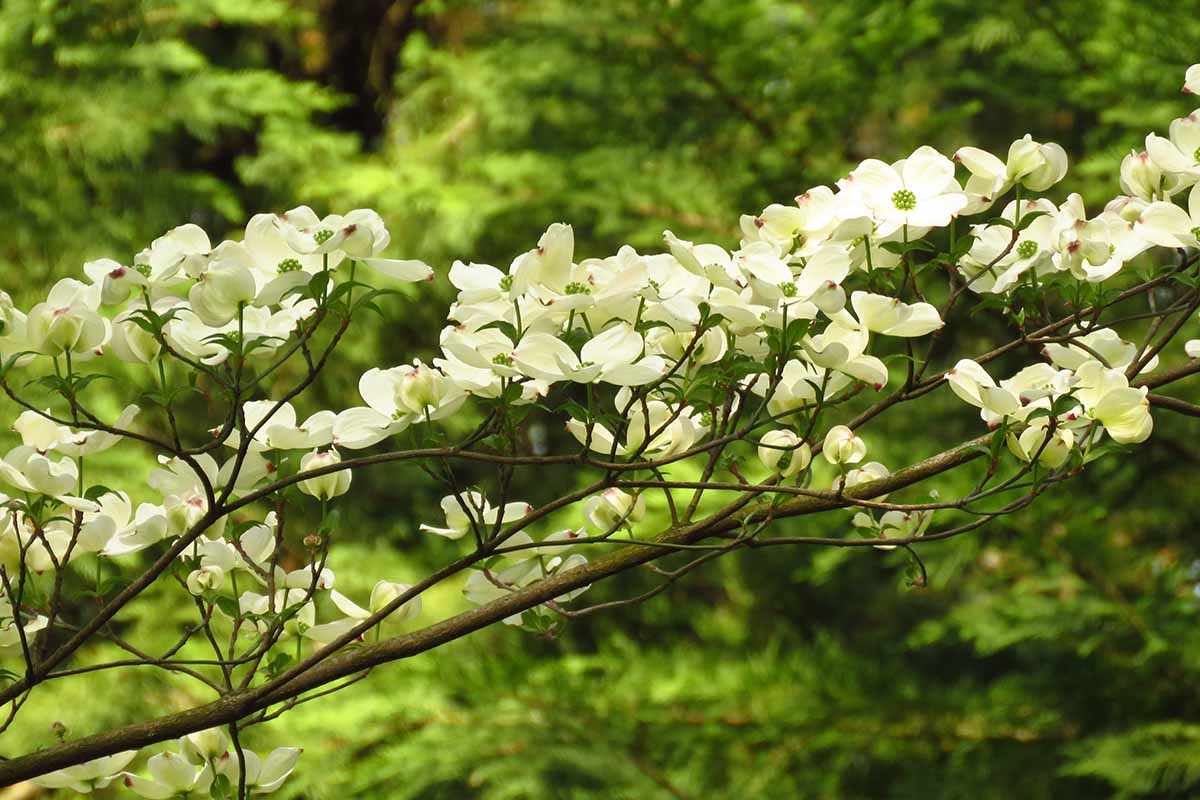
Once a forest species, flowering dogwood was brought into the landscape as an ornamental tree by the 1730s. Notably, United States presidents George Washington and Thomas Jefferson grew C. florida on their properties.
During the Civil War, C. florida bark was used in tea and compound tinctures as a substitute for quinine, which was difficult to come by.
Uses for the wood include crafting archery bows, golf club heads, jeweler’s boxes, butcher blocks, and tool handles.
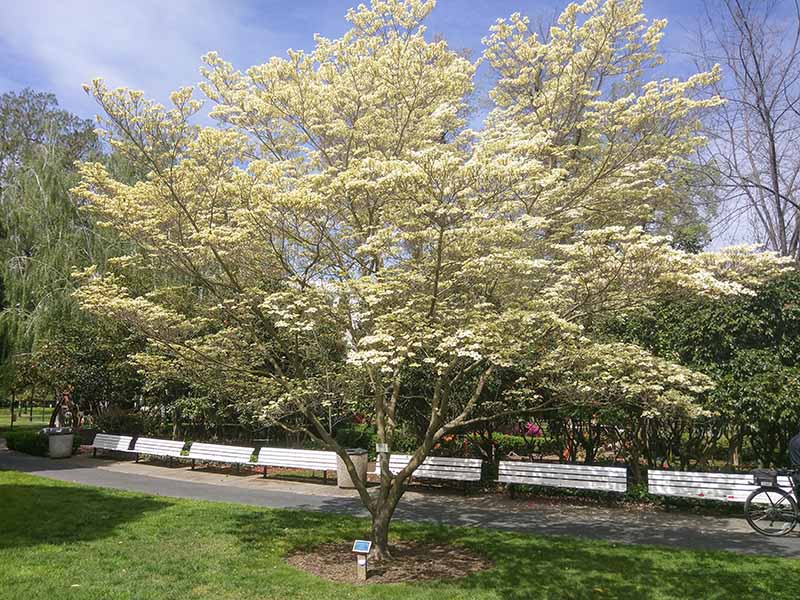
In the 1970s, dogwood anthracnose was first reported in the States, which resulted in significantly reduced native dogwood populations.
In 1988, a group made up of state and federal representatives was formed who meet annually to discuss the progression of and current research on the disease.
Since then, horticulturalists have bred and cultivated a number of resistant varieties.
The flowering dogwood was named the state tree of Missouri in 1955 and of Virginia in 1956, and the state flower of North Carolina in 1941.
It’s a beloved ornamental planting in home gardens and landscapes.
Propagation
You can propagate C. florida via seed, stem cuttings, and transplanting.
You can also use layering or grafting techniques, but for the average home gardener, it’s easier to stick with the first three methods.
From Seed
To collect seeds, pick fruits when they’re ripe in August – recently fallen seeds are essentially guaranteed to be ripe.
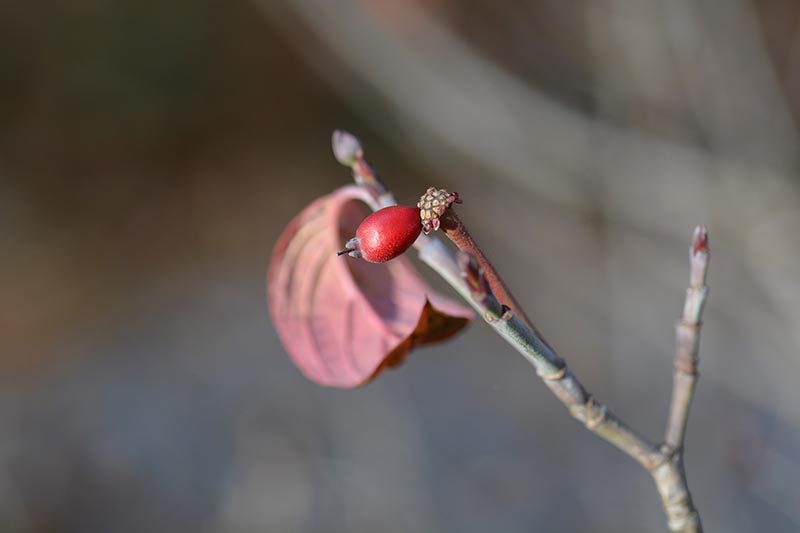
To separate the seeds from the fruit, some growers recommend wrapping duct tape around the blades of a blender, blending up the fruits, and washing away the loosened flesh by rinsing the seeds in a sieve.
Immediately following cleaning, the seeds will need to be stratified.
Put the seeds in a plastic baggie filled with damp peat moss, seal it, and place the baggie in the refrigerator for 120 days. All the while, make sure to keep the moss moist.
After stratification, fill well-draining four-inch pots with a 50-50 mixture of sphagnum peat moss and perlite.
Pots can be expensive, but even punching a couple of small holes in the bottoms of plastic SOLO cups will do the trick.
Moisten the soil, then bury each seed half an inch deep in its own pot. Set the pots on a sunny indoor windowsill where they will receive indirect light.
Keep the soil moist, maintain indoor temperatures of 70 to 80°F, and repot as needed to avoid root bindage.
Once August rolls around again, the seedlings should be ready for hardening off.
Move the pots outside to an area with full or partial sun for thirty to sixty minutes before bringing them back inside.
Each following day, add an additional half to full hour of exposure until the seedlings can handle a full day outdoors, and then they’ll be ready for transplanting!
From Stem Cuttings
Before you begin, fill a seed-starting tray with a 50:50 mix of moist peat moss and perlite.
In early summer, take four-inch cuttings with a sterile blade from the tips of healthy, semi-hardwood stems.
Remove the leaves from the bottom inch of each cutting and dip the cut ends in a rooting hormone, such as Bontone II IBA rooting powder from Bonide.
Bonide Bontone II IBA Rooting Powder
It’s available from Arbico Organics.
Stick the hormone-powdered ends of each cutting about an inch deep into the peat and perlite mix in your tray, making sure to space them a couple of inches apart.
Place the tray near a sunny window, and keep the media around the cuttings moist.
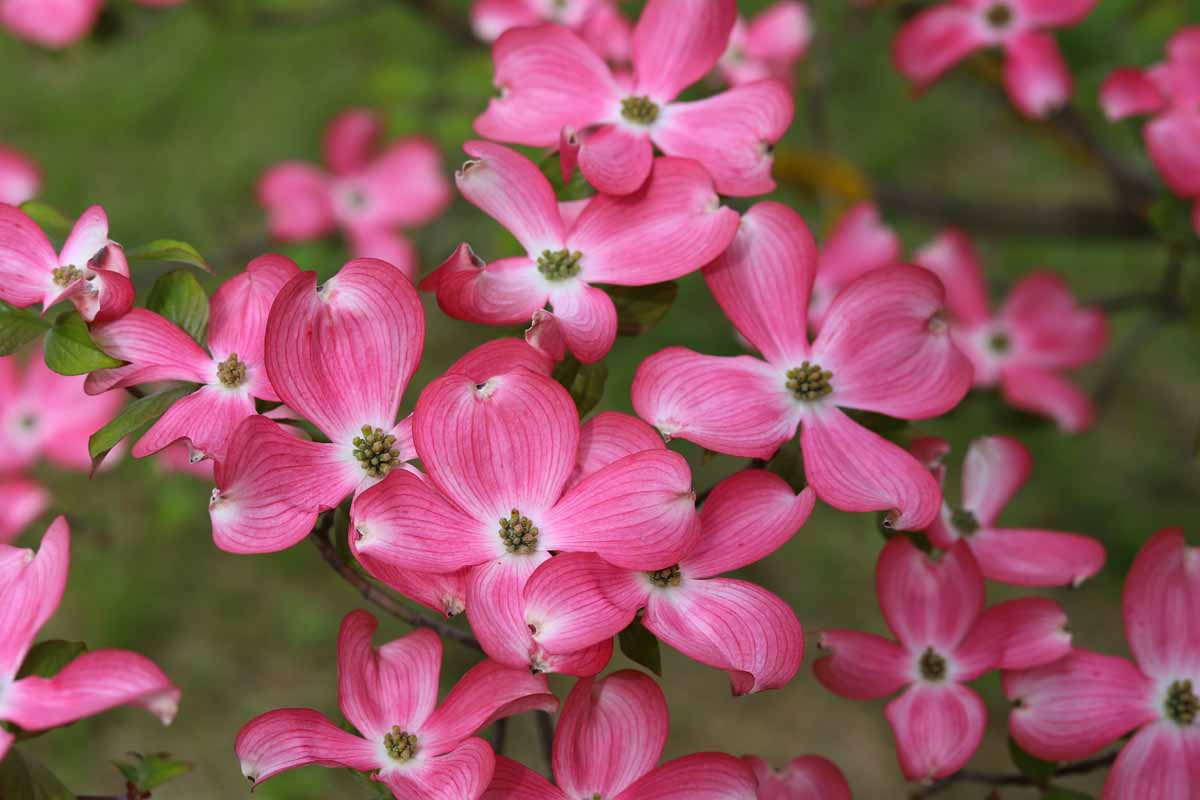
In six to eight weeks, give the cuttings a gentle tug to test for sturdy root development. Each rooted cutting can be repotted in its own four-inch container.
Once new leaves form, the cuttings are ready to be moved into a cold frame outside.
Because dogwood cuttings take a couple of seasons to develop winter hardiness, it’s best to keep them in a hotbed or heated cold frame for the next two years, repotting as necessary and adjusting the temperature as needed – don’t let it drop below freezing or rise high enough to cook the plants!
Once they’re sufficiently hardened off to outdoor conditions, it’s time to transplant them into the garden.
Via Transplanting
Got transplants? The best times for transplanting are late fall and early spring.
Come transplanting time, prepare patches of fertile garden soil with a pH of 5.5 to 6.5.
Space these sites at least 20 feet apart and no less than six feet away from nearby structures or plants, and make sure they’re situated in partial shade to full sun.

Dig holes of the same depth and a bit wider than the root systems of your transplants.
Build up a mound of soil in the middle of the hole. Lower the transplants in one at a time, spread their roots over the mound, backfill with soil, and water them in.
Add two to four inches of mulch – such as pine straw or shredded leaves – to the root zone and maintain consistent soil moisture.
It’s important to make sure the root flare isn’t covered by either mulch or soil. If it is, then go back and uncover it.
How to Grow Flowering Dogwood Trees
For optimal health and aesthetics, it’s best to give your flowering dogwood the exact conditions that it needs.
Climate and Exposure Needs
C. florida performs best in USDA Hardiness Zones 5 to 9. As an understory tree, it loves partial shade, but it can also handle partial to full sun exposure quite nicely at maturity if it’s kept properly hydrated.
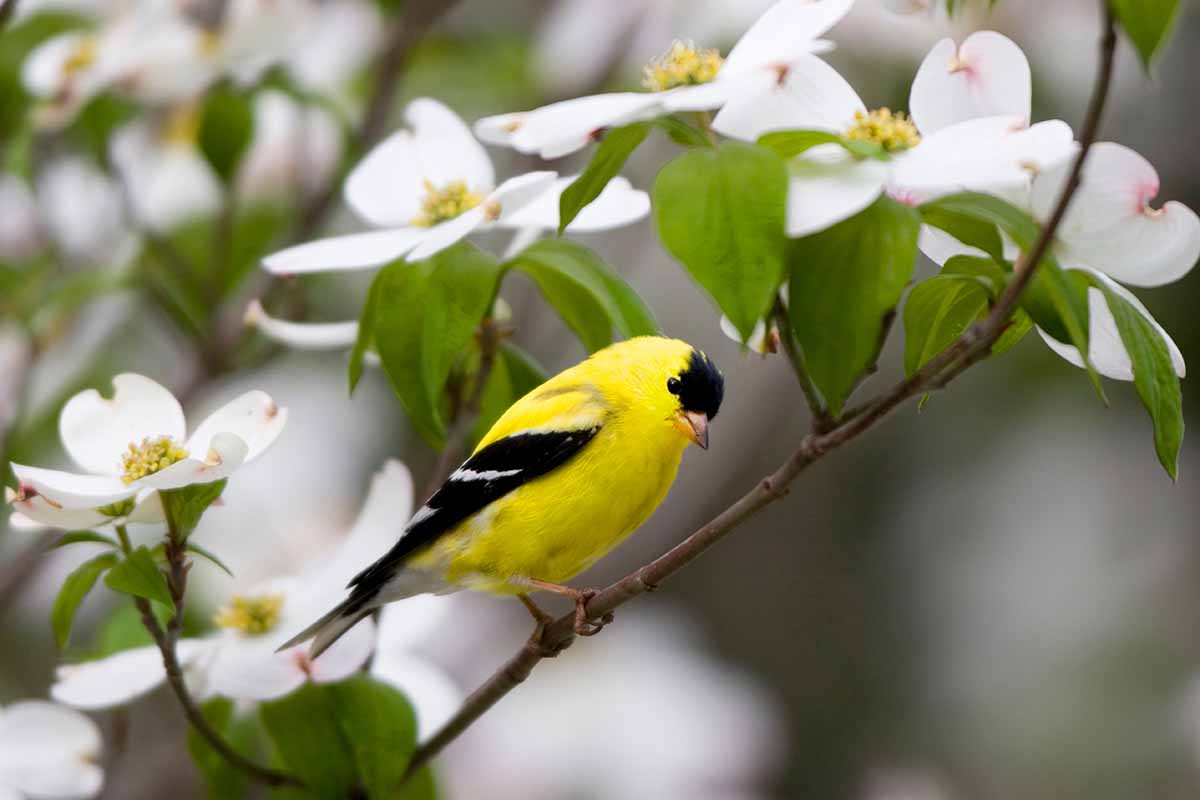
Leaf scorch can occur when conditions are too dry, so a part shade location should be provided if you wish to play it safe.
Once your trees have reached maturity, don’t worry about wind or storm damage, the flowering dogwood is a tough specimen.
Soil Needs
As is the case with many plants, well-draining soil is imperative for C. florida, along with a decent level of soil fertility and the 5.5 to 6.5 pH range mentioned above.
Soil compaction is another condition that this tree tolerates well, which is handy if you’re working with heavy soils.
Water and Fertilizer Needs
Ideally, you should maintain even soil moisture while avoiding oversaturation.
This can be a fine line to tread, so err on the side of caution when it comes to irrigation – think minimum effective dose, rather than maximum tolerable volume.
A useful irrigation prescription is to water whenever the top inch of soil feels dry.
Keep soil fertility up by working a couple inches of well-rotted manure or compost into the root zone every spring.
Growing Tips
- Grow in a part shade location.
- Provide well-draining soil with a pH level of 5.5 to 6.5.
- Keep the soil moist, but not saturated.
Pruning and Maintenance
Damaged, diseased, or dead branches should be pruned whenever you notice them, but more thorough bouts of pruning should be an annual practice, conducted just prior to the emergence of new growth in spring.
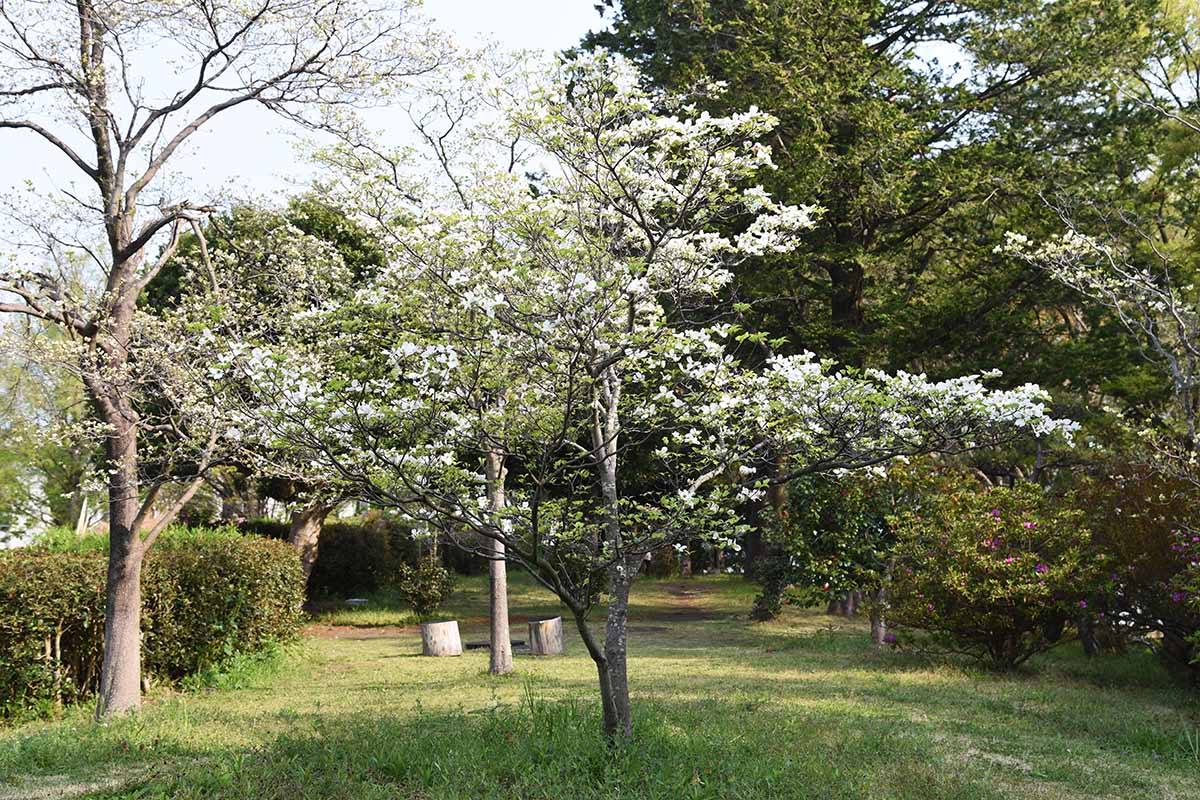
During these annual pruning sessions, focus on removing crossing or rubbing branches, watersprouts/suckers, and any obtrusive branches that hinder inter-canopy airflow… but don’t remove more than a third of the tree in one go!
Don’t worry about shaping the form or habit – a flowering dogwood looks better au naturel.
Maintaining the mulch layer you added upon transplanting with fresh material is effective for preserving soil moisture, regulating soil temperature, and preventing weed growth.
As a deciduous tree, C. florida will drop its leaves each year, which may need to be raked up. One cool thing about fallen Cornus foliage, though, is its rapid decomposition.
Flowering dogwood leaves, for example, are 10 times quicker to decompose than oak leaves. Any raked-up and shredded leaves from healthy specimens would make for a perfect mulch or composting material!
Rake up and dispose of fallen leaves if your top priority is disease prevention, as pathogens can live on in leaf detritus.
Cultivars to Select
A regular ol’ flowering dogwood is already quite spectacular.
You can find a four- to five-foot potted C. florida specimen at FastGrowingTrees.com.
For seeds, the CZ Grain Store sells 20-packs of white-flowering C. florida seeds on Amazon.
But perhaps you’re after a certain trait that the standard species lacks. If so, you’re in luck – there are more than a hundred cultivars to choose from.
Here are my personal favorites.
Appalachian Spring
The flowering dogwood is known for a lot of things, but disease resistance isn’t one of them.
However, ‘Appalachian Spring’ is the exception: it’s nearly impervious to Discula destructiva, a particularly nasty pathogen that you’ll learn about shortly.
It also packs some serious beauty within its upright 20- to 30-foot-tall frame, with overlapping white flower bracts and gorgeously red fall hues.
So yes, it can dish out the aesthetics and take the anthracnose.
Cherokee Chief
While the other three cultivars described here have white flowers – a reflection of my own aesthetic bias – ‘Cherokee Chief’ is a glorious exception.
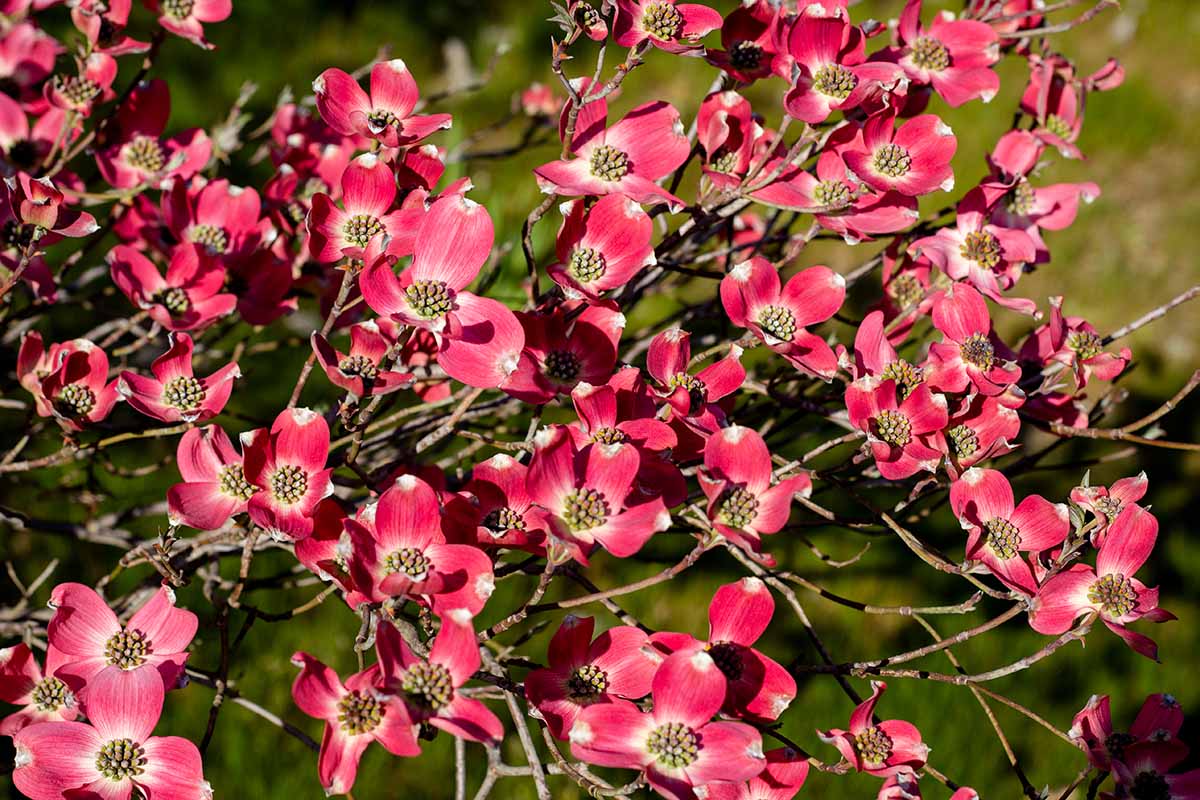
The leaf bracts of ‘Cherokee Chief’ are pretty much the inverse of the standard species’: ruby-red, with white notches at their apex.
There’s a bit of additional white at the bract bases, which creates a white “aura” of sorts that draws the eye to the greenish true flowers at the center.
Reaching a height of 20 to 25 feet and a width of 12 to 18 feet, this cultivar is more upright than the standard species plant. A display of pride, perhaps?
FastGrowingTrees.com sells ‘Cherokee Chief’ in two- to three- or four- to five-foot sizes.
Cherokee Princess
But perhaps you’re content with a white flowering dogwood. In that case, ‘Cherokee Princess’ is simply an improvement upon the original.
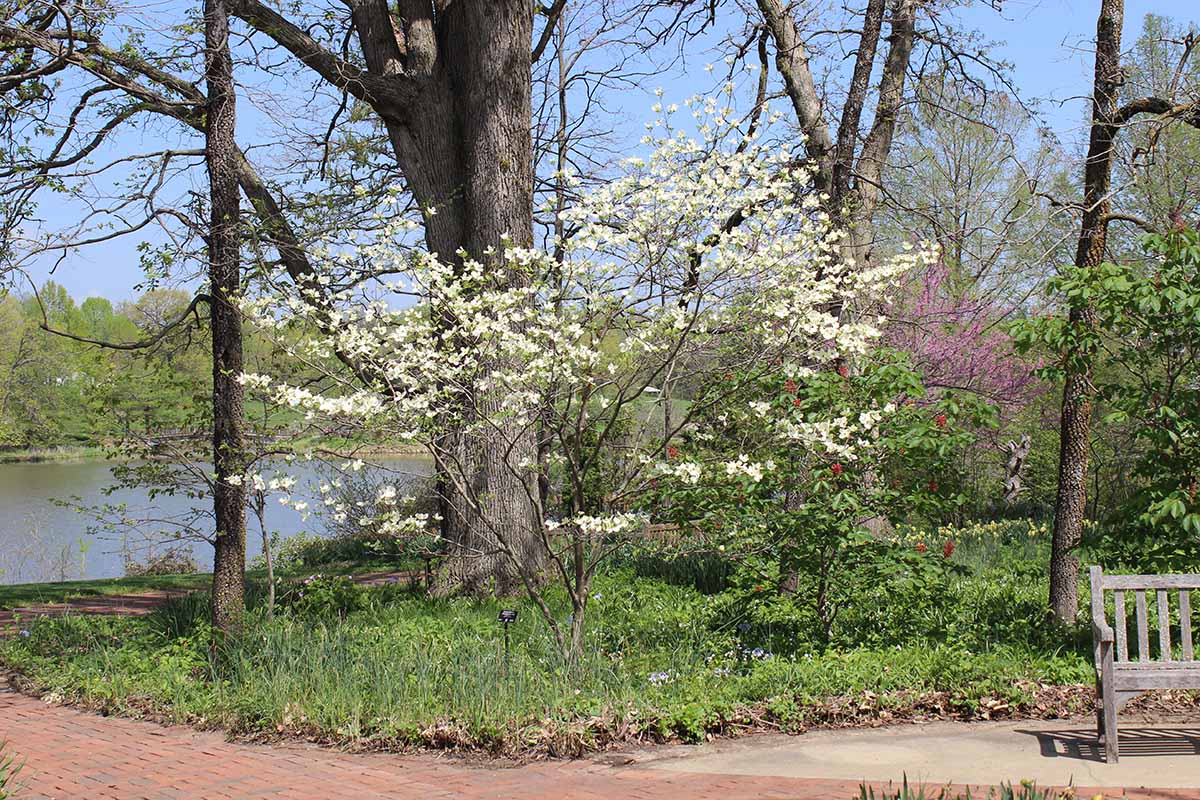
This tree emerges early in spring, even for a flowering dogwood.
Additionally, the white blooms of this variety reach five inches in diameter – an inch or two wider than standard.
At a mature height and width of 20 feet, it’s also resistant to spot anthracnose and canker.
A consistent champion of C. florida cultivar evaluations, ‘Cherokee Princess’ emerges from dormancy earlier, flowers more heavily, and produces wider bracts than the standard – C. florida 2.0, if you will.
You can find ‘Cherokee Princess’ in #5 containers available from Nature Hills Nursery.
Cloud 9
Can’t get enough flowers? With the ‘Cloud 9’ cultivar growing in your landscape, you’ll be on cloud nine.
Reaching a height and width of 15 to 20 feet, the white bracts of ‘Cloud 9’ grow more densely than is typical, to the point of overlapping with each other. This variety also has a slower growth rate than the species plant.
Along with canker resistance, ‘Cloud 9’ has a greater tolerance for ice, snow, and cold temperatures than other flowering dogwoods.
If you’re located just on the border of Zone 5 – or surprised by the occasional unusually harsh winter – then ‘Cloud 9’ is the perfect choice.
You can find ‘Cloud 9’ available from FastGrowingTrees.com.
Managing Pests and Disease
All the splendor of a flowering dogwood doesn’t mean squat if the plant is wracked with disease or infestation.
And unfortunately for C. florida, it’s prone to infection or damage caused by a lot of pathogens and pests.
Herbivores
In the wild, a flowering dogwood attracts a variety of plant-eating mammals to its tasty fruits, leaves, and/or twigs.
There are a couple for the home gardener to be on the lookout for:
Deer
Your best defense against deer? A “D-fence.”… and the “D” stands for deer.
Indeed, a deer fence around your property will keep your landscape protected from any cervid-chomping.
Additionally, sprays of deer repellent around susceptible plantings will further deter Bambi from feasting.

In need of resources? We’ve got deer fencing and deer control guides for you to read, and Enviro Pro sells six-pound tubs of granular deer repellent via Amazon.
Rabbits
Just like deer, rabbits will browse the leaves and twigs of C. florida, if given the chance.
Take away said chance with a perimeter of chicken wire or hardware cloth.
Erect it two to three feet in height, and bury it two to three inches below the ground around each plant to prevent sub-surface tunneling.
Need some fencing? These galvanized rolls of fencer wire from Home Depot should meet your needs just fine.
Insects
Keeping creepy-crawlies from consuming your Cornus will save you some strife on the disease front, since insects can also vector pathogens.
Borers
Aka Synanthedon scitula, dogwood borers are the larval form of a wasp-like clearwing moth that lays its eggs in bark wounds and openings.
After they hatch, the larvae feed on the inner bark and cambium, which can lead to branch death, decreased vigor, and even the death of the entire tree… especially if your tree is young.
Adding insult to injury, infested leaves can redden and drop early.
Proper cultivation will help shore up any bark openings that the moths might lay eggs in. Avoid unnecessary injury by being careful with your mowing, pruning, and string trimming.
Applications of permethrin in early May, repeated at three-week intervals until fall, will aid control. Target the trunk, major branches, and any bark wounds with your spray.
Trees infested beyond repair should be removed and disposed of.
Club Gall Midges
The dogwood club gall midge (Resseliella clavula) is a small fly measuring a sixteenth of an inch in length.
Female adults lay their eggs in terminal leaves, which hatch, enter the shoots, and begin feeding.
Small galls form in response, which kills any portion of the stem beyond the gall.
Come fall, the larvae exit the gall and drop to the ground to overwinter. Along with the galls, leaf wilt and deformation are both noticeable symptoms.
Light infestations aren’t a big issue, but heavy infestations can stunt growth. When you notice galls, remove and burn the twigs on which they reside.
Sawflies
The primary symptom of a Macremphytus tarsatus infestation is partially to completely consumed foliage, which is eaten by these pests in their larval stage.
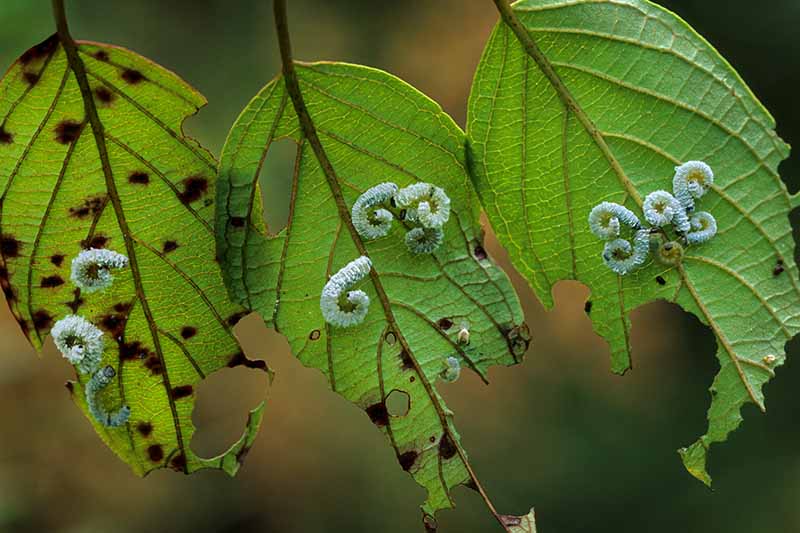
Young larvae are coated in a powdery white wax, while mature larvae are yellow, with black spots or crossing stripes. Defoliation can lead to health issues for the plant.
Begin to monitor for these pests in early July, and manually remove any larvae that you see. Sprays of horticultural oil – applied according to package directions – can help with heavier infestations.
Find more tips on identifying and controlling dogwood pests here.
Disease
Utilizing sterile tools, planting in disease-free soils, and selecting plants free from illness will all help to prevent the spread of pathogens that could seriously wreck your C. florida.
Anthracnose
Also known as Discula anthracnose, this disease is caused by Discula destructiva fungi, a name that’s forebodingly ominous. And for good reason – to a Cornus, anthracnose is practically The Black Death.
Initial symptoms appear in spring as spots on the leaves and leaf bracts, which work their way up the tree. Infected foliage develops purple-edged tan spots, large blotches, and dry brown margins, which can blight the leaves and cause drooping.
The infection also causes cankers on the stems, branches, and trunk, eventually girdling and killing the tree.
To prevent infection, plant resistant cultivars such as ‘Appalachian Spring.’ Remove and pitch any water sprouts, dead branches, and fallen leaves, potential overwintering sites for the fungi.
Improving air circulation via pruning will also lower the odds of infection, and spraying new buds, leaves, and shoots with approved, anthracnose-targeting fungicides in early spring will help to protect your tree.
Be sure to rotate fungicides to avoid fungal resistance toward any one type.
Cankered branches should be removed as you notice them. If that doesn’t improve an infected tree’s health, you should probably excavate and dispose of the specimen.
Fungal Leaf Spot
Leaf spot in flowering dogwood may be caused by Cercospora cornicola fungi and species of Septoria.
Infection primarily occurs during the wet summer months.
Both kinds of fungi cause small, irregularly-shaped spots bordered by leaf veins. Cercospora spots are tannnish-brown, while Septoria spots are a darker brown.
Fungal leaf spot won’t kill the tree, but it certainly won’t help its looks. Cleaning up fallen leaves promptly will help with prevention, while more severe infections can be controlled with fungicides.
Powdery Mildew
Caused by the fungus Erysiphe pulchra, powdery mildew covers upper leaf and shoot surfaces with a fine white powder.
Additional symptoms include marginal leaf scorch, reddish discoloration, yellowing, and premature leaf drop. Infections aren’t fatal, but all of these symptoms can impact the plant’s beauty.
For prevention, dispose of nearby fallen leaves, remove infected tissues, and prune to improve air circulation.
Cultivars from the Appalachian series including ‘Joy,’ ‘Blush,’ ‘Snow,’ and ‘Mist’ all show resistance against powdery mildew.
Fungicides such as myclobutanil and propiconazole – applied according to directions on the label or by a professional arborist – work for control.
Best Uses for Flowering Dogwood Trees
Whether planted individually or as part of a small grouping, flowering dogwood looks awesome as a specimen planting.
It offers multiseason visual interest with exceptional aesthetics throughout the year: spectacular spring blooms, lush summer leaves, colorful fall foliage, and an interesting branching habit to enjoy during otherwise barren winters.
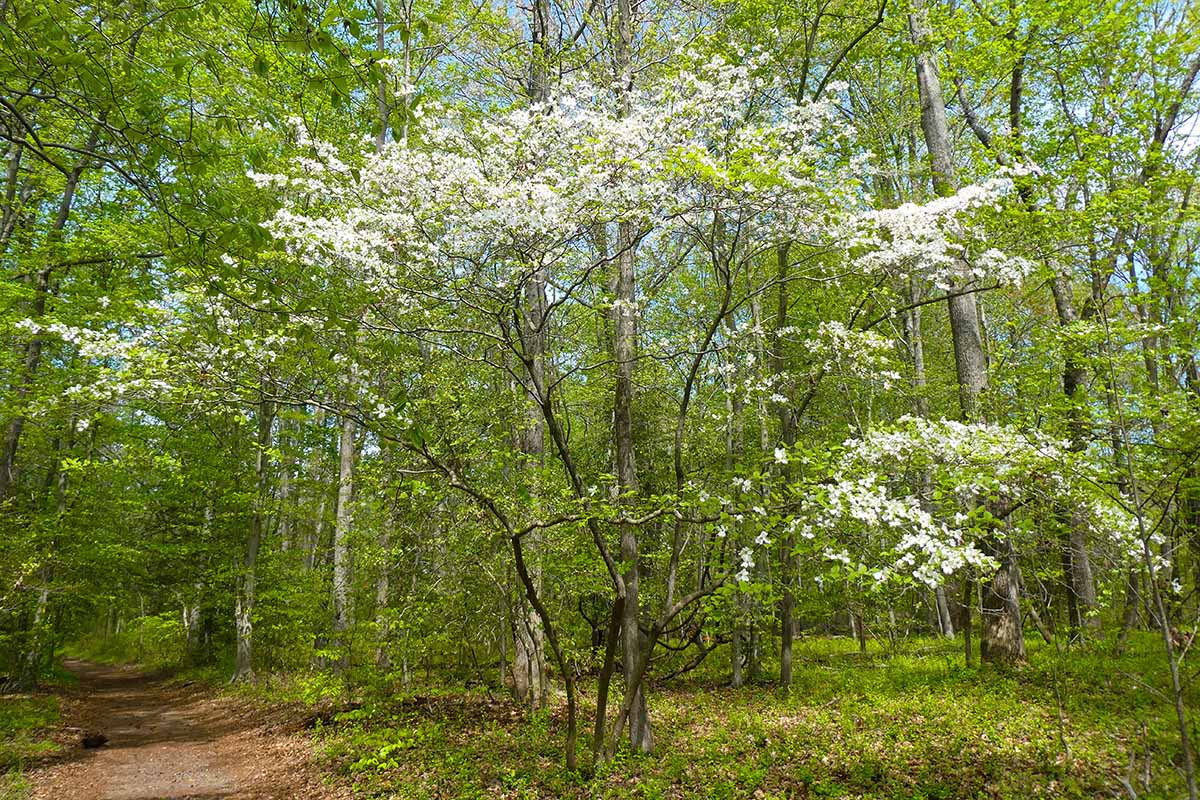
As a mid-size understory tree that can survive just fine out in the open, C. florida is versatile in the landscape.
It looks right at home in woodland and native gardens, and fits in spaces where larger trees won’t.
For fans of fauna as well as flora, C. florida attracts pollinators with its flowers, while its fruits attract birds and various mammals.
Quick Reference Growing Guide
| Plant Type: | Deciduous flowering tree | Flower/Foliage Color: | Green, gold-yellow, pink, white/dark green (red to reddish-purple in fall) |
| Native to: | Southeastern Canada, eastern United States and Mexico | Water Needs: | Moderate |
| Hardiness (USDA Zones): | 5-9 | Maintenance: | Moderate |
| Bloom Time: | Spring | Tolerance | Compacted soil, fire, juglone, storm damage, wind |
| Exposure: | Part shade to full sun | Soil Type: | Moist, fertile |
| Time to Maturity: | 6 years | Soil pH: | 5.5-6.5 |
| Spacing: | 20 feet apart, 6 feet from structures | Soil Drainage: | Well-draining |
| Planting Depth: | 1/2 inch (seeds), depth of root system (transplants) | Attracts: | Birds, butterflies, mammals, mining bees |
| Height: | 15-35 feet | Uses: | Bird gardens, groupings, native gardens, specimens, woodland gardens |
| Spread: | 15-40 feet | Family: | Cornaceae |
| Growth Rate: | Slow (juvenile), moderate (established) | Genus: | Cornus |
| Common Pests and Diseases: | Dogwood borer, dogwood club gall midge, dogwood sawfly; dogwood anthracnose, fungal leaf spot, powdery mildew | Species: | Florida |
A Dogwood Pun? But Wouldn’t That Be Cornus?
I’m sorry, but I had to.
Anyways, now you can grow the flowering dogwood! It’s gorgeous, versatile, and though it may put your plant health care skills to the test, most would agree it’s worth the trouble.
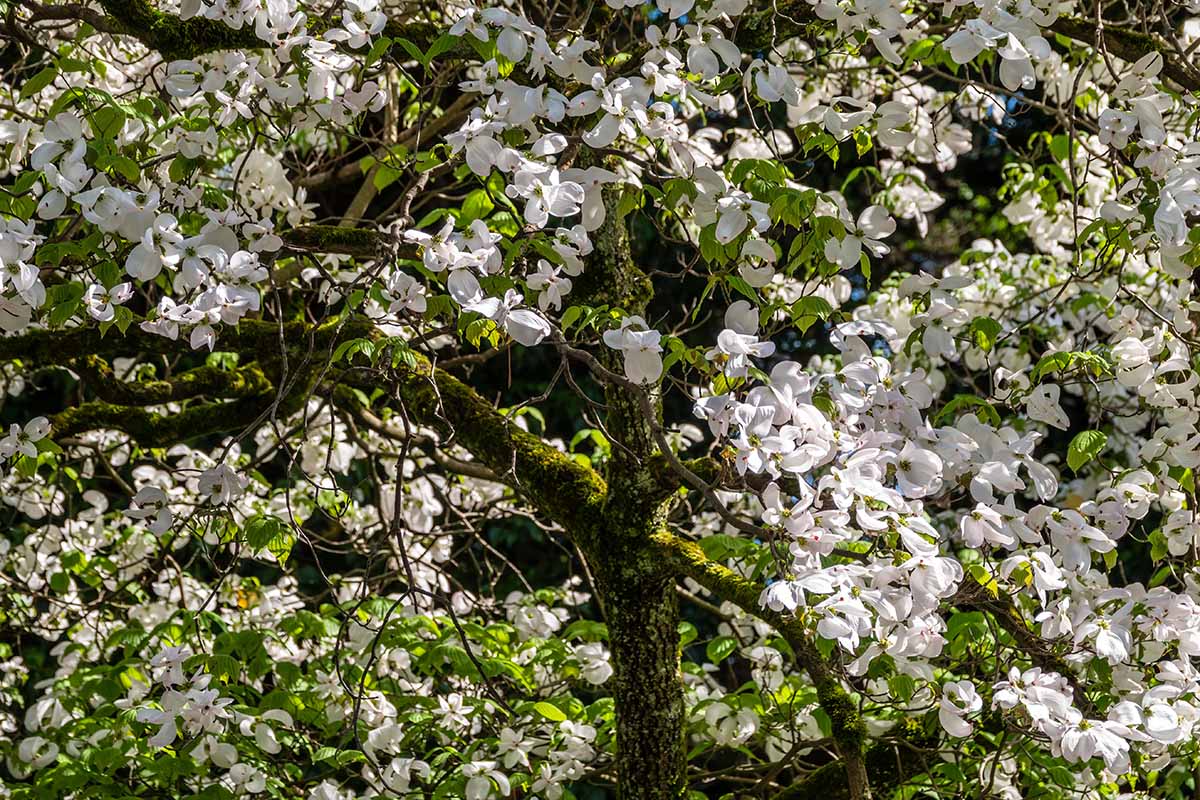
Plus, it’s a little slice of marvelous Missouri that you can put in your landscape… which, I’ll admit, I say with a heavy bias.
Any questions or remarks about growing this tree can go into the comments section below!
Interested in growing some other landscape trees? Then have at these here guides:

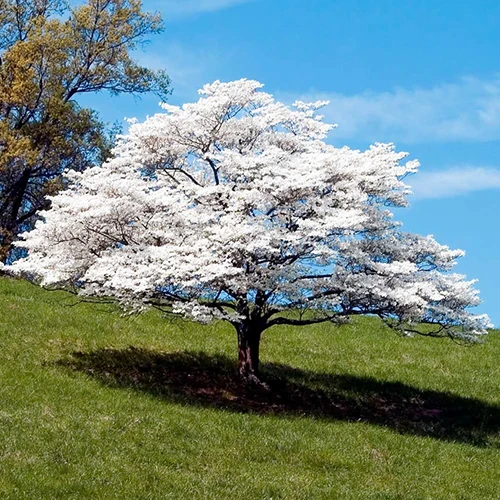
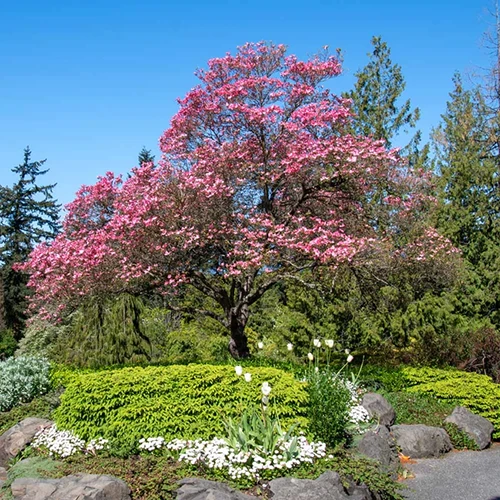
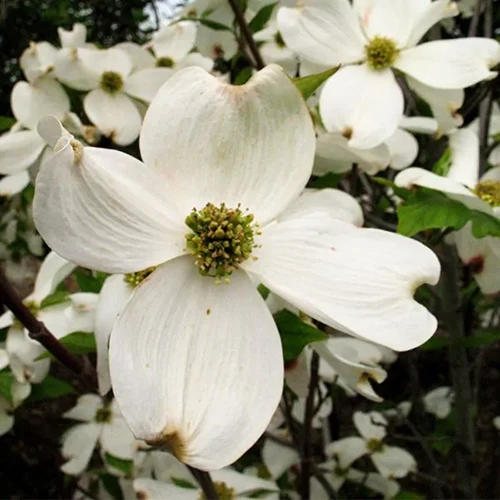
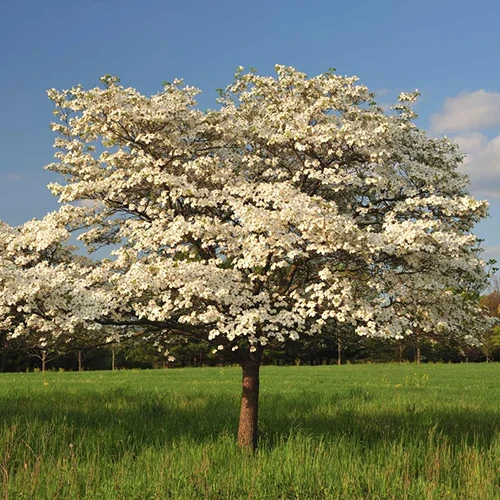
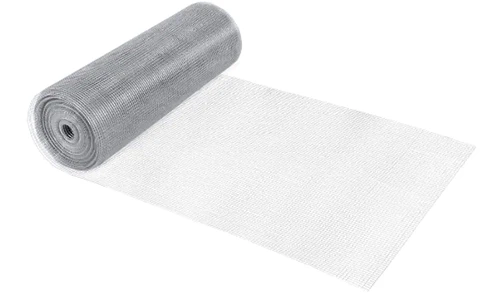
What about the legend of the dogwood being used for Christ’s cross?
Since this particular species (Cornus florida) is native to North America, it was highly likely never used by the Romans and not pertinent to this guide.
Hello, I own what is called the Milkeyway Dogwood. It was planted four years ago. It was magnificent when I received it but since it’s transplant it became stressed. The last two years no flowers. I thought I would lose it. I got my arborist involved and now this year it flowered again. This is my favorite tree next to my Gingko. So today I noticed very tiny insects almost worm like eating the flower and the center bud. What can I do… my arborist will stop over next week. He’s not sure what it could mean. Do you have… Read more »
Sorry to hear about your dogwood, Debra! Are you able to provide an image of the pests, by chance? If not, a spray of horticultural oil or insecticidal soap is usually my go-to for a pest I want gone.
What are white patches on bark of branches of of my pink dogwood tree ?
Hey, Ana! Sounds like it may be powdery mildew, or perhaps a type of lichen. Do you happen to have an image that you could send?
How would a dogwood do in Southern California zone 10b (30-35*)? Heat zone 6.
Hey, Craig! A dogwood may have a tough time making it in USDA Zone 10b, especially with how hot it’s been. You might be able to pull off growing a Pacific dogwood there if you give it partial shade and plenty of water, but I don’t want to make any promises. Have you noted any dogwoods growing in your area? If so, how are they doing?